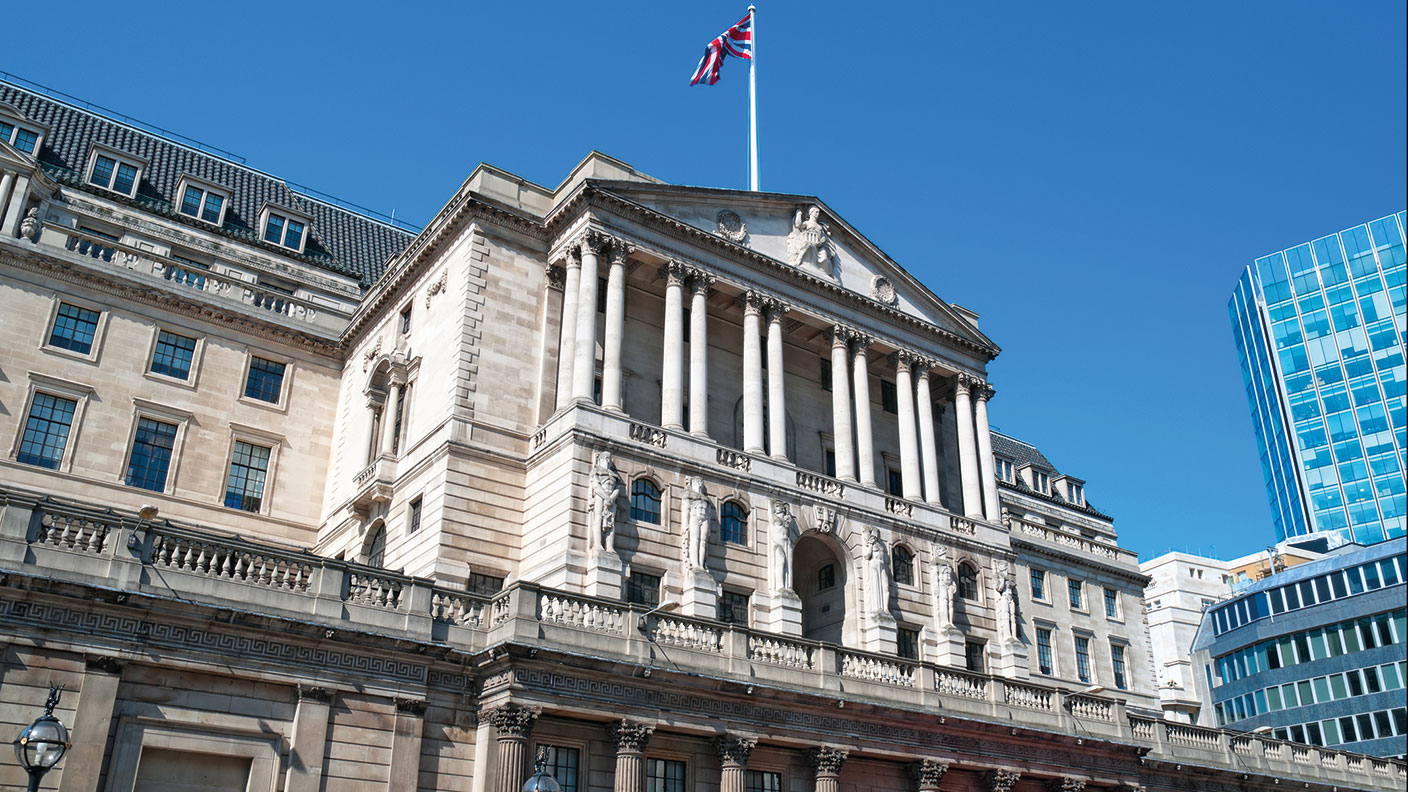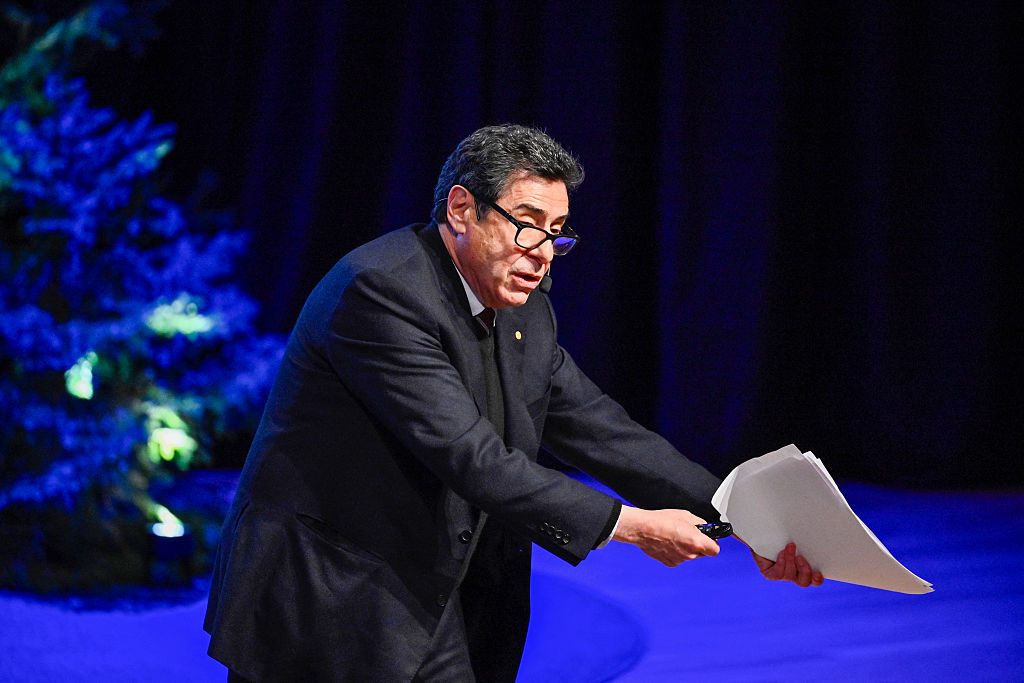This inflation surge is definitely not transitory
Policymakers have been betting that inflation will cool over the coming year, but it could last much longer than they think.

“The inflation numbers are undeniable”, says John Authers on Bloomberg. US consumer prices rose by 5.4% year-on-year in September, a return to the 13-year highs seen in summer as the economy reopened. “There’s no longer [a] way to dismiss this inflation... as merely transitory”.
US inflation stays hot
US core inflation, a measure that strips out volatile food and energy prices, rose by 4% year-on-year. Inflation has been driven by a tight supply of goods such as microchips as well as shortages of workers, says Neil Irwin in The New York Times. There are also reports of “shadow inflation”, where companies cut back on product ranges, or the size of goods (known as “shrinkflation”), instead of raising prices.
Policymakers have been betting that inflation will cool “substantially” over the coming year, says Justin Lahart in The Wall Street Journal. The hope is that a receding pandemic and a global supply-chain recovery will consign this inflationary spike to the history books. Yet that clearly still isn’t happening. Some will point to the disruption the Delta variant of Covid-19 has caused to Southeast Asian factories and supply chains, but it is becoming clear that though the pandemic will end at some point, its economic effects could last much longer than once anticipated.
MoneyWeek
Subscribe to MoneyWeek today and get your first six magazine issues absolutely FREE

Sign up to Money Morning
Don't miss the latest investment and personal finances news, market analysis, plus money-saving tips with our free twice-daily newsletter
Don't miss the latest investment and personal finances news, market analysis, plus money-saving tips with our free twice-daily newsletter
A UK interest-rate rise?
In Britain, Bank of England policymakers have been dropping increasingly heavy hints that they could raise interest rates before the end of the year, sending yields on two-year government bonds up to a two-year high. Last month’s annual UK CPI inflation figure, 3.1%, is still far above the 2% target. Many traders expect an interest-rate rise from 0.1% to 0.25% in the coming months.
“The signposts all seem to be pointing to a November rate rise,” says Danni Hewson of AJ Bell. Inflation is supposed to be like “Goldilocks’ porridge”, but “there’s no guarantee that by turning the interest-rate dial the Bank of England can coax out an inflationary environment that is neither too hot nor too cold.” A “rapidly closing window” of ultra-low rates could also inspire renewed frenzy in the housing market.
“The UK economy is experiencing a taste of stagflation,” says a note from Capital Economics. The near-term GDP outlook is weakening and labour shortages are more acute in the UK than in the eurozone. We’re not heading back to a full-scale repeat of the 1970s, but the next six months will be difficult, at least until inflation peaks at about 5% next April.
There is no guarantee that inflation will moderate after next spring, says Roger Bootle in The Daily Telegraph. True, coronavirus-induced distortions will be washing out of the data by then. But the economy will face new challenges from higher labour costs (national insurance is rising) to the hangover from lavish quantitative easing, which means consumers still have a lot of cash in the bank ready to spend. “The time has come for the Bank to send a clear signal that it will not allow higher inflation to become entrenched” by raising rates next month.
Get the latest financial news, insights and expert analysis from our award-winning MoneyWeek team, to help you understand what really matters when it comes to your finances.
Alex is an investment writer who has been contributing to MoneyWeek since 2015. He has been the magazine’s markets editor since 2019.
Alex has a passion for demystifying the often arcane world of finance for a general readership. While financial media tends to focus compulsively on the latest trend, the best opportunities can lie forgotten elsewhere.
He is especially interested in European equities – where his fluent French helps him to cover the continent’s largest bourse – and emerging markets, where his experience living in Beijing, and conversational Chinese, prove useful.
Hailing from Leeds, he studied Philosophy, Politics and Economics at the University of Oxford. He also holds a Master of Public Health from the University of Manchester.
-
 PayPoint: A promising stock for income-seekers
PayPoint: A promising stock for income-seekersPayPoint, a household name across Britain, is moving away from its traditional roots toward a digital future. Investors after a steady income should buy in
-
 Invest in forestry: a tax-efficient way to grow your wealth
Invest in forestry: a tax-efficient way to grow your wealthRecord sums are pouring into forestry funds. It makes sense to join the rush, says David Prosser
-
 Nobel laureate Philippe Aghion reveals the key to GDP growth
Nobel laureate Philippe Aghion reveals the key to GDP growthInterview According to Nobel laureate Philippe Aghion, competition is the key to innovation, productivity and growth – here's what this implies for Europe and Britain
-
 'Investors should brace for Trump’s great inflation'
'Investors should brace for Trump’s great inflation'Opinion Donald Trump's actions against Federal Reserve chair Jerome Powell will likely stoke rising prices. Investors should prepare for the worst, says Matthew Lynn
-
 The state of Iran’s collapsing economy – and why people are protesting
The state of Iran’s collapsing economy – and why people are protestingIran has long been mired in an economic crisis that is part of a wider systemic failure. Do the protests show a way out?
-
 Hiring new staff for your business? Help is available
Hiring new staff for your business? Help is availableHiring more employees is a costly business, but help is available from the government, says David Prosser
-
 'Expect more policy U-turns from Keir Starmer'
'Expect more policy U-turns from Keir Starmer'Opinion Keir Starmer’s government quickly changes its mind as soon as it runs into any opposition. It isn't hard to work out where the next U-turns will come from
-
 Why does Donald Trump want Venezuela's oil?
Why does Donald Trump want Venezuela's oil?The US has seized control of Venezuelan oil. Why and to what end?
-
 Britain heads for disaster – what can be done to fix our economy?
Britain heads for disaster – what can be done to fix our economy?Opinion The answers to Britain's woes are simple, but no one’s listening, says Max King
-
 Vietnamese stocks are charging ahead – what to buy
Vietnamese stocks are charging ahead – what to buyVietnam has been upgraded from a frontier to an emerging market. It remains a promising pick, says David Prosser